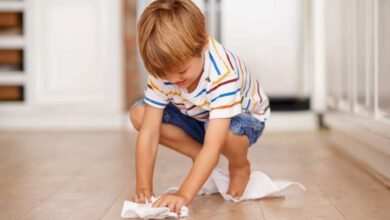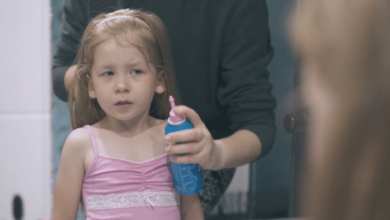
Mini Escape Artists: The Psychology and Strategies
Mini escape artists – those tiny Houdinis who seem to vanish from sight in the blink of an eye – are a source of both amusement and anxiety for parents. Their boundless energy and insatiable curiosity often lead them on adventures that leave grown-ups bewildered and breathless.
But behind these seemingly mischievous acts lies a fascinating world of child development, where a desire for exploration, independence, and a touch of mischief intertwines to create a unique blend of behavior.
This blog post delves into the psychology of mini escape artists, exploring the motivations behind their escapades and the techniques they employ to achieve their goals. We’ll also examine the potential consequences of their behavior and provide practical strategies for parents and caregivers to manage these budding adventurers while fostering their natural curiosity and desire for independence.
Strategies for Managing Escape Artist Behavior

Escape artist behavior in children is a common challenge for parents and caregivers. It can be frustrating and even concerning, but it’s important to remember that children are naturally curious and eager to explore their surroundings. By understanding the reasons behind this behavior and implementing effective strategies, you can create a safe and nurturing environment that encourages their development while managing their urge to escape.
Creating a Safe and Stimulating Environment
A safe and stimulating environment is crucial for managing escape artist behavior. When children feel secure and engaged, they are less likely to seek out excitement or escape from boredom.
- Childproof your home:Identify and address potential hazards that could tempt your child to escape, such as unlocked doors, open windows, or unsecured furniture. Secure any dangerous items or substances that could be harmful.
- Provide age-appropriate activities:Engage your child in activities that are stimulating and challenging, but also safe and appropriate for their age. This can include playdates, arts and crafts, outdoor exploration, or educational games.
- Create a designated play area:Establish a specific area in your home where your child can play freely and safely. This area should be well-equipped with toys, books, and other stimulating materials.
Engaging Children in Age-Appropriate Activities
Engaging children in activities that are stimulating and challenging can help them channel their energy and curiosity in positive ways.
- Offer a variety of activities:Rotate activities regularly to keep your child interested and engaged. This can help prevent boredom, which can lead to escape artist behavior.
- Encourage exploration:Provide opportunities for your child to explore their environment safely. This could include taking them to the park, visiting the library, or going on nature walks.
- Involve them in household tasks:Give your child age-appropriate tasks to help around the house. This can help them feel a sense of responsibility and contribute to the family.
Positive Reinforcement and Redirection Techniques, Mini escape artists
Positive reinforcement and redirection are effective techniques for managing escape artist behavior. Instead of focusing on punishment, these strategies emphasize rewarding positive behavior and guiding your child towards more appropriate actions.
- Praise desired behavior:When your child exhibits positive behavior, such as staying in a designated area or engaging in a chosen activity, praise them enthusiastically. This positive reinforcement encourages them to repeat the desired behavior.
- Redirect unwanted behavior:When your child attempts to escape, calmly and firmly redirect their attention to a more appropriate activity. For example, if they try to run out the door, gently guide them back inside and suggest an alternative activity.
- Set clear boundaries:Establish clear boundaries and rules for your child’s behavior. Explain these rules in a simple and straightforward manner, and consistently enforce them.
Mini Escape Artists in Popular Culture

Mini escape artists, those pint-sized masters of Houdini-esque feats, have captured the imaginations of audiences for generations. Their mischievous antics and uncanny ability to slip away from seemingly impossible situations have become a staple in popular culture, influencing how we view children and their boundless energy.
Portrayals of Escape Artist Behavior in Popular Culture
The portrayal of mini escape artists in literature, movies, and television shows has been varied, ranging from comedic to dramatic. These representations often highlight the challenges and triumphs associated with raising children, especially those who are particularly adventurous and independent.
- In the beloved children’s book “The Cat in the Hat” by Dr. Seuss, the mischievous Cat in the Hat, despite his adult appearance, is portrayed as a child-like figure with a knack for escaping difficult situations and creating chaos.
He is a master of disguise, a skilled magician, and a relentless prankster. The Cat in the Hat’s escapades, though often disruptive, are ultimately harmless and offer a humorous perspective on the challenges of parenting.
- The movie “Home Alone” features Kevin McCallister, a resourceful and imaginative eight-year-old who is left behind when his family travels for the holidays. While initially terrified, Kevin quickly adapts to his situation, turning his home into a fortress against a pair of inept burglars.
Kevin’s resourcefulness and ability to outsmart his adversaries highlight the resilience and ingenuity of children, even in challenging circumstances.
- The television show “Full House” features the character of Michelle Tanner, a precocious and adventurous toddler who frequently finds herself in situations that require her to use her wit and resourcefulness to escape. Michelle’s escapades often involve escaping from her watchful uncles or finding creative ways to get what she wants.
Her antics provide a humorous and relatable look at the challenges of raising a curious and independent child.
Impact of Portrayals on Public Perception
The portrayal of mini escape artists in popular culture has had a significant impact on public perception, shaping how we view childhood and the challenges of raising children. These representations often reinforce the idea that children are naturally curious and independent, but also highlight the importance of setting boundaries and providing structure.
My kids are mini escape artists, always finding ways to sneak out of their rooms. The other day, I found them huddled in the kitchen, whipping up a batch of gluten free snow balls for a surprise treat. I guess they’re not just escaping, they’re also becoming little culinary masterminds!
My kids are mini escape artists, always finding ways to wriggle out of their car seats or sneak out of their rooms. It’s a constant game of cat and mouse, but it does make for some hilarious moments. Thankfully, I’ve learned to keep things fun and frugal, especially during the holidays.
We’ve created a whole bunch of traditions that don’t break the bank, like making homemade ornaments, writing letters to Santa, and even participating in a family gift exchange. You can check out 12 fun frugal family Christmas traditions for some inspiration.
And while I’m sure my kids will always find a way to escape, at least they’ll have some fun memories to keep them warm during the holidays.
Mini escape artists are a constant source of amusement, their ingenuity in finding ways to break free from their confines never ceases to amaze. Just like these little escape artists, a valentine meringue kiss can be deceptively delicate, yet surprisingly resilient.
They’re a sweet treat that melts in your mouth, leaving you wanting more, much like the playful antics of our mini escape artists.






